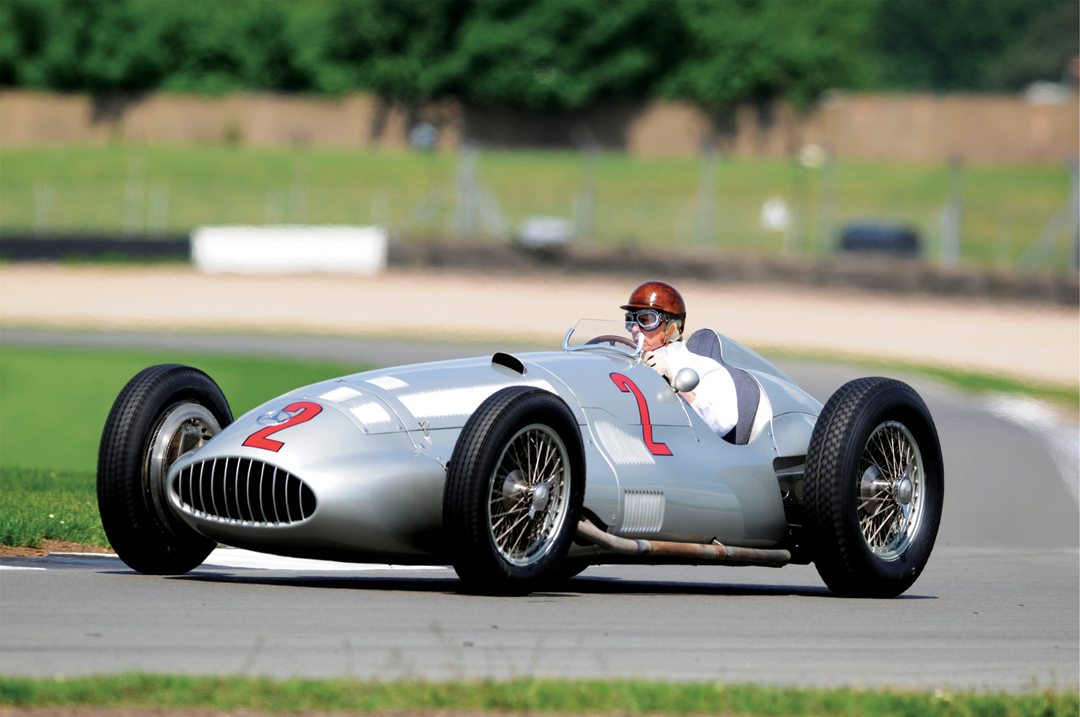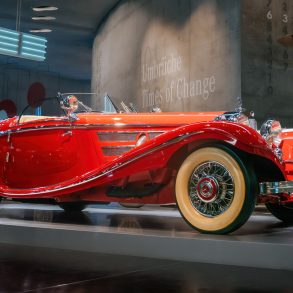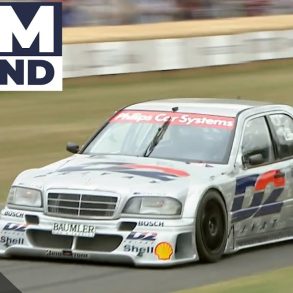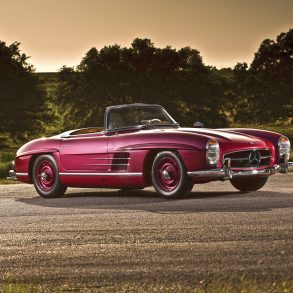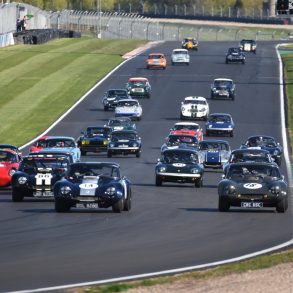Mercedes-Benz rocked Donington Park with its mighty “Silver Arrow” confrontation with Auto Union in 1937 and 1938. Back then, the British crowds were simply stunned by the sight, sound and smell of the mighty racers, and a bit of that magic returned to the same facility when the Vintage Sports Car Club laid on spirited demonstrations by a 1937 W125 and 1939 W154 at successive race meetings in the end of May.
In contrast to the often-tame demonstrations Audi presents with its Auto Unions, the Mercedes were driven with some verve by experienced racer Tony Dron. As Dron became more confident in the Rudolf Uhlenhaut-designed beauty that took multiple victories during the 1937 season, he could be seen correcting power slides out of the hairpin, much to the approval of the spectators.
The W125 runs on a potent mixture of methanol, ethyl alcohol and benzol, producing an astounding 580 bhp from its supercharged 5.6-liter straight eight. Built to comply with the 750kg weight limit and possessing a formidable power-to-weight ratio, it was capable of nearly 200 mph. Rudolf Caracciola, Manfred von Brauchitsch, Herman Lang and Dick Seaman will forever be associated with the W125, which remained the most powerful grand prix car for a generation. This model scored seven victories in 1937 to Auto Union’s five.
With a change of formula for 1938, Mercedes chose to develop the W125 chassis into what became known as the W154. A quad-cam V12 of 2,862-cc was angled to allow the transmission to run to the left of the cockpit, resulting in a lower overall height. Also squeezed into the tight space under the hood was a Roots-type supercharger, which helped produce 425 bhp in early form. The 1938 season may have belonged to Mercedes-Benz, but the races at Donington Park in 1937 and 1938 both fell to Auto Union.
The W154 demonstrated was the 1939 model with twin-stage superchargers and smaller radiators that allowed an even lower body. In this final form this model was said to produce 483 bhp and be capable of 205 mph. Dron reported that the W125 was physically very demanding to drive, while the W154 proved more manageable.
By Keith Booker


